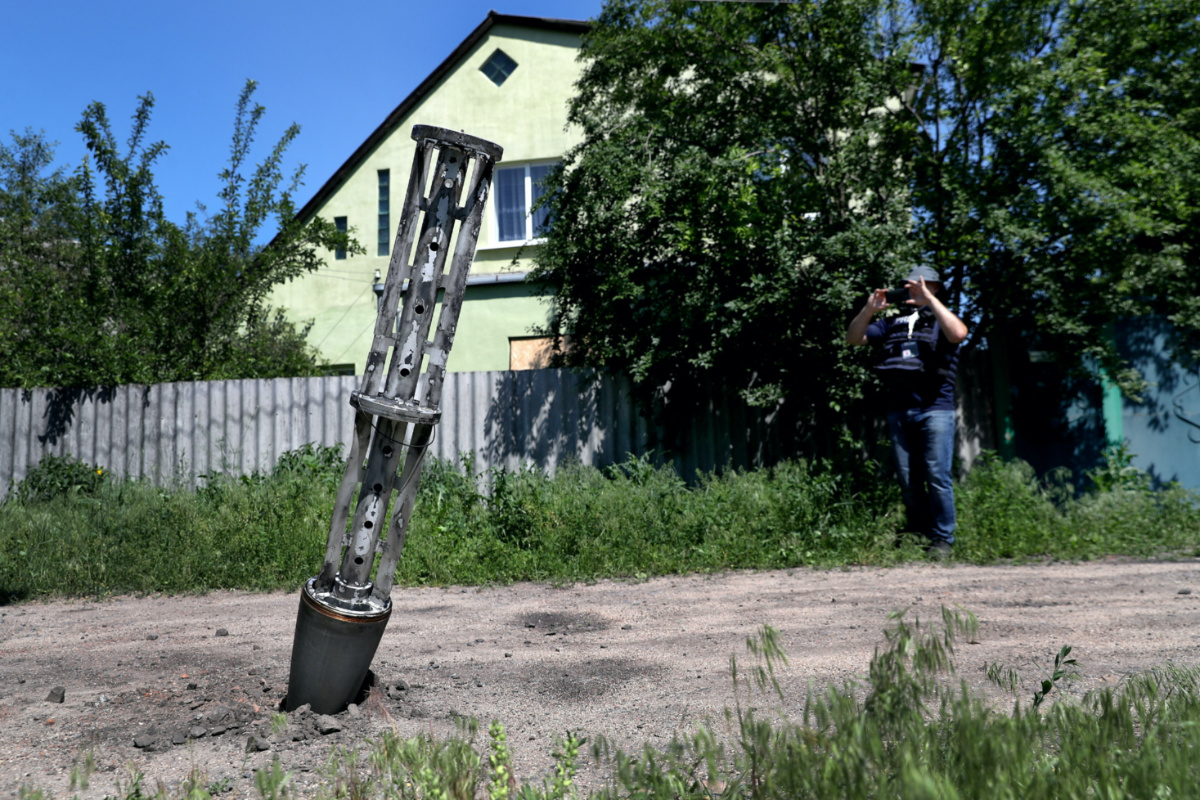Geneva, Switzerland
Reuters
The number of people killed or wounded by cluster munitions increased eightfold last year to more than 1,000, mostly due to their use in the Ukraine war, particularly by Russia, a campaign group said on Tuesday.
The deaths were the most reported from cluster bombs since a 2008 ban on the weapons joined by more than 100 countries. Cluster munitions, fired from the ground or by aircraft, explode mid-air, spraying smaller ‘bomblets’ over a wide area.

An emptied cluster munition container is seen stuck in the ground following a military strike, amid Russia’s attack on Ukraine, on the outskirts of Kharkiv, Ukraine, on 10th June, 2022. PICTURE: Reuters/Ivan Alvarado/File photo
Neither Russia nor Ukraine is a party to the ban, nor is the United States, which began supplying cluster munitions to Ukraine this year.
Survivors often suffer severe injuries from blasts and burns that can result in life-long medical needs, and campaigners worry in particular about unexploded bombs that remain on the battlefield long after a conflict ends.
Of the 1,172 victims last year, 353 died including more than 300 in Ukraine, the report by the Cluster Munitions Coalition campaign group showed, the most since the group began compiling its annual reports 14 years ago.
The report said that nearly all the victims were civilians and three-quarters were children who are often drawn to play with unexploded bomblets which sometimes resemble shiny balls or batteries.
“Its unconscionable that civilians are still dying and being wounded from cluster munitions 15 years after these weapons were prohibited,” Mary Wareham from Human Rights Watch told a Geneva press conference.
In Ukraine, the report said Russia had used cluster munitions “repeatedly”, while Ukraine had also used them, but to “a lesser extent”. It did not provide a breakdown. There was no immediate response from Kyiv or Moscow to the report.
The report covered last year, and therefore excludes this year’s use by Ukraine of US cluster munitions, which Kyiv began receiving in July. Kyiv says it is using them only against Russian troops at the front line. Russia has denied using them at all but has threatened to do so in response.
Unlike in past years where casualties have nearly always been caused by the delayed explosion of bomb remnants, most of the 2022 casualties were from live bombs, the report said.
Both Moscow and Kyiv deny targeting civilians in the war that began with Russia’s invasion in February, 2022, during which Russian forces have razed several Ukrainian cities to the ground.
In deciding to send cluster munitions to Ukraine this year, Washington said they have legitimate uses on the battlefield against military targets, and would save lives if they hastened the end of the war. It also said its cluster munitions leave behind far fewer unexploded bomblets than those used by Russia.
The report documented the first known use of cluster munitions in Myanmar last year, as well as use in Azerbaijan, Iraq, Laos, Lebanon, Syria and Yemen.






